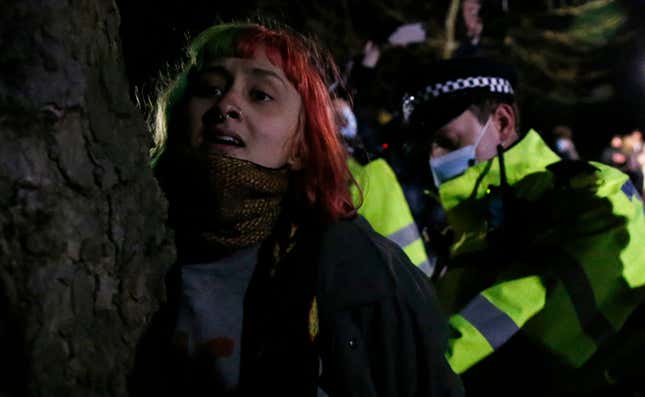The Problem Is the Police
Latest

Protesters and politicians are calling for an investigation into the Metropolitan’s Police response to Saturday night’s vigil for Sarah Everard, the 33-year-old woman who was killed while walking home from a friend’s house earlier this month.
Ahead of the somber event—sparked by an outpouring of grief and a national reckoning with gender-based violence—a court ruled that the gathering was unlawful because it violated covid regulations. But while the vigil’s organizers called off the vigil as they originally planned it, crowds gathered anyway. What happened next is familiar for anyone who paid attention to the Black Lives Matter protests that took place in the U.S.—particularly those that occurred after city-imposed curfews—over the summer: As night fell, people who attended the peaceful demonstration quickly became targets for arrest.
-

-

-

-

-

-

-

-

-

-

-

-

-

-

-

-

-

-

-

-

-

-

-

-

-

-

-

-

-

-

-

-

-

-

-

-

-

-

-

-








































